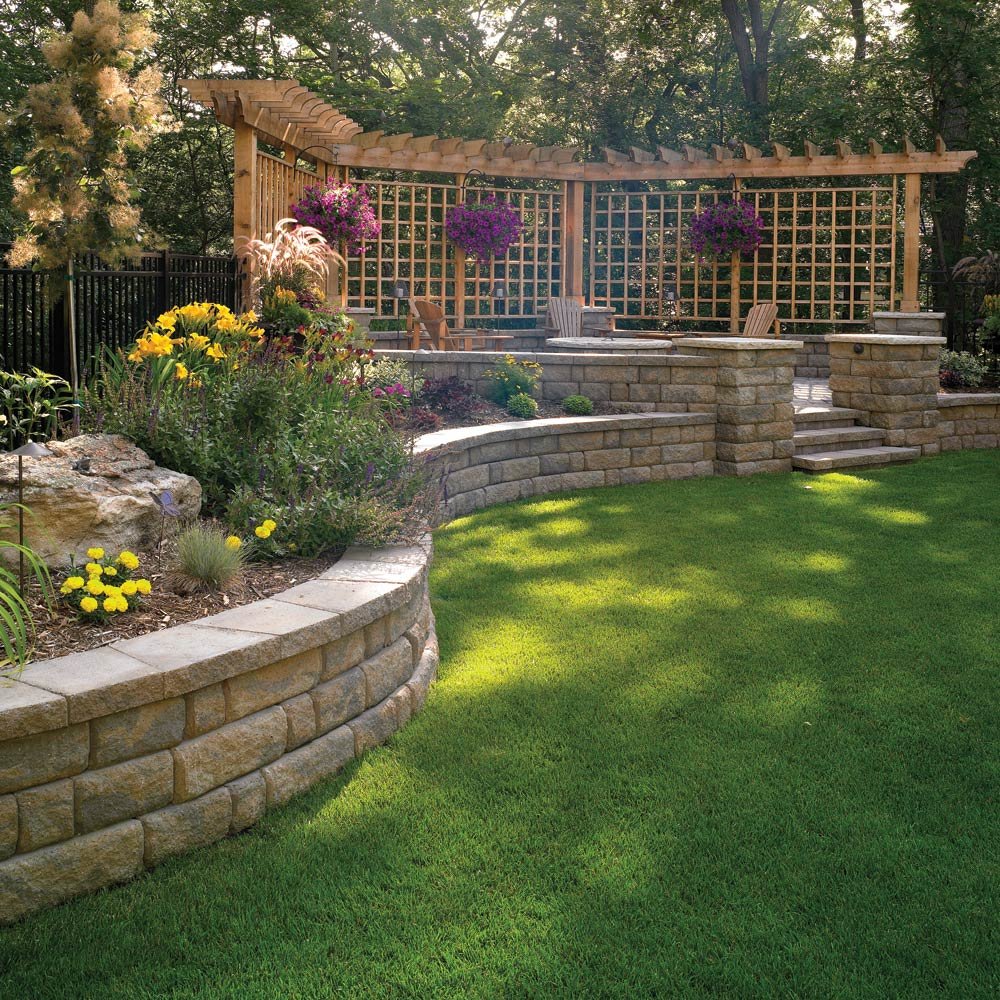RETAINING WALLS
An elegant and affordable way to hide imperfections in a yard.
If your front yard has a heavy slope down to the street, a retaining wall can hide it.
If you have a mud pit in your backyard when it rains heavily, a retaining wall can be built to hide this and create a raised garden.
Retaining walls also accent paver walkway’s for a full elegant stone appearance.
If your entryway steps don’t match, we can create steps using the retaining design that will match or accent your new walkway, driveway, patio, or wall system. Replace those old, faded, wood or concrete patio steps with a retaining wall step system. You’ll never have to stain or replace them ever again.
ARE YOU IN NEED OF A RETAINING WALL?
The main use of retaining wall blocks is to do what their name implies – retain earth. If you have a slope or grade in your yard on your property that you need to retain for structural reasons, retaining wall blocks are the best way to do this. Most residential walls are no more than 5 feet tall, but the products we use can be installed over 20 feet in height. From an aesthetics perspective, all of the retaining wall blocks we install are produced by the same companies that manufacture our paver products, therefore you get colors and blends that complement each other very well.
The other and more frequent use of retaining is decorative. The same paver manufacturer’s wall blocks can be used to build stand-alone sitting areas, fire pits, columns for pergolas, landscape walls that add elevation to your yard, privacy walls, and of course, retaining walls that hold back earth are very decorative as well.
The process for installing a retaining wall involves digging a trench beneath the level grade of the land, filling that trench with a layer of compacted base material and at least one row of blocks which once the job is completed, won’t be visible. This row is the anchor for the wall. The higher the wall, the deeper the anchor needs to be and in turn, the more material needs to be installed beneath the surface. Once the foundation is set, we build the wall row by row. Behind the retaining wall, we install a special geo-textile fabric which will allow for proper water percolation and also contain the large grade rocks which are going to be filled in the gap behind the new wall and the earth. Once the wall is built up to the height that is necessary, a cap stone is installed, the fabric is closed off and dirt and grass are installed over the gap we discussed above.



